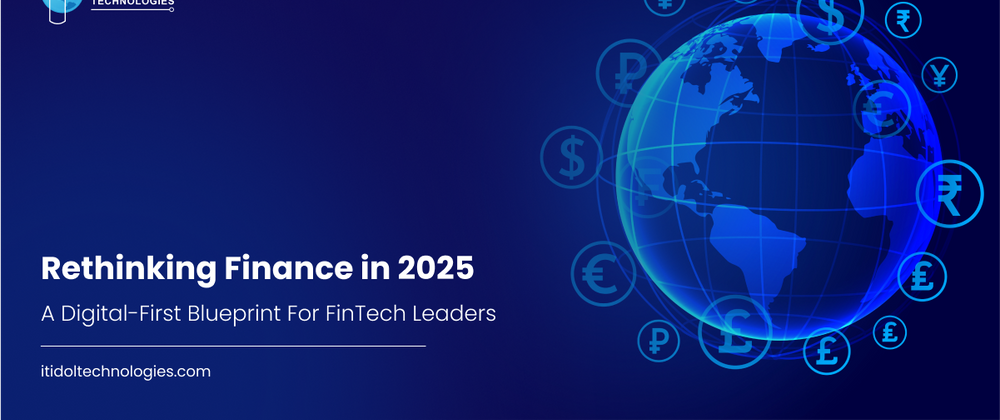Reinventing Finance for a New Era
The financial world is undergoing a quiet revolution, one that isn’t just digital, but deeply structural. In 2025, FinTech isn’t about catching up; it’s about staying ahead in a marketplace where technology, data, and user expectations evolve by the hour.
For financial leaders, this is no time for surface-level upgrades. It's a moment to reimagine the very foundations of how finance operates, delivers, and grows.
Why the Urgency?
The digital transformation imperative has matured into a business-critical priority. The traditional systems that once powered finance are now outpaced by the demands of real-time decisions, seamless user experiences, and intelligent automation.
What’s needed is a shift from reactive upgrades to proactive reinvention.
This means:
Rebuilding systems with modular, composable architecture
Embedding AI into the core, not just the edges
Thinking beyond platforms—to ecosystems, partnerships, and interoperability
The 5 Strategic Forces Driving Change
1. Infrastructure Evolution
The days of monolithic platforms are numbered. Today, financial infrastructure must be agile, interoperable, and built for scale. Providers are moving toward integrated, API-first ecosystems that support faster rollouts, improved user experiences, and continuous optimization.
2. AI as a Financial Engine
AI is no longer an emerging trend—it's now central to decision-making, personalization, and predictive analytics. From underwriting to fraud detection, its value lies in speed, precision, and scalability. But the future of AI in finance depends not just on deployment, but on governance, explainability, and continuous learning.
3. The Rise of Embedded Finance
Finance is becoming invisible—and that’s a good thing. Embedded finance allows financial services to exist where users already are: shopping apps, logistics platforms, social marketplaces. This creates new revenue streams, new user behaviors, and entirely new business models.
4. Regulatory Intelligence
Compliance is becoming as dynamic as the markets it governs. Institutions must now design with regulation in mind, building adaptable systems that can pivot quickly without compromising on trust or transparency.
5. Platformization of Private Assets
Access to private markets is being democratized. Digital platforms and tokenization are opening new doors for retail and institutional investors alike. This isn't a trend—it’s a structural shift in how wealth is created, accessed, and transferred.
Building the Future: What It Takes
True FinTech transformation doesn’t begin with tools. It begins with a mindset.
Modern financial leaders must think like architects: designing systems that are not only intelligent but flexible, secure, and built for constant evolution
What that looks like:
Modular systems that can scale with demand and adapt to change
Offline-first mobile applications that ensure continuity in unpredictable environments
Secure-by-design architectures with encryption, zero-trust principles, and identity-first security
AI that’s transparent, auditable, and embedded across workflows.
Data ecosystems that unlock value, not just store information.
Risks to Navigate - Before They Disrupt You
With innovation comes complexity. Financial institutions must proactively address the risks that accompany transformation:
Security blind spots in mobile and cloud deployments
Lagging compliance due to fragmented governance models
Legacy tech debt is slowing down integration and innovation.
AI misuse stemming from unmonitored models or biased datasets
Smart organizations plan for these risks upfront—with embedded governance, agile compliance structures, and modernization roadmaps that don’t just patch, but evolve.
Your Competitive Advantage: Execution with Intent
Transformation doesn’t reward the first mover. It rewards the most intentional mover.
The institutions that will lead tomorrow are already:
Replatforming their infrastructure
Embedding intelligence into every layer
Fostering partnerships that accelerate innovation
Redesigning around users, not just regulators or revenue
Final Takeaways: From Vision to Value
As FinTech moves from buzzword to business enabler, here’s what matters most:
Build with flexibility: Future-proof systems demand modular design
Embed intelligence: AI isn’t optional; it’s foundational
Design for compliance: Agility and accountability must coexist
Prioritize trust: Security and transparency are your greatest currencies.
Act with urgency: Digital-first leadership is the competitive edge
Ready to Shape the Future?
The next phase of FinTech will be defined by those who build boldly, not just adapt reactively. If you're a financial leader looking to modernize, scale securely, and deliver intelligent user experiences, the time to act is now.






Top comments (1)
Digital transformation is reshaping not only traditional banking but also the broader financial ecosystem, creating opportunities for leaders who understand both technology and wealth management. Looking at high-profile figures like lucian grainge net worth can illustrate how strategic investments and digital innovation in media and entertainment intersect with financial growth, offering insights that FinTech leaders might apply when building scalable, profitable models in 2025.